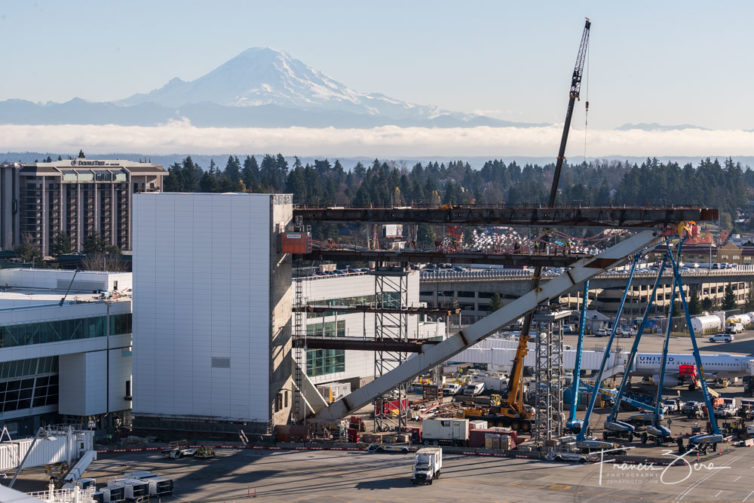
The main-terminal side of the forthcoming pedestrian bridge from SEA’s south satellite terminal will feature epic views of Mount Rainier, at least when it’s not raining. This photo is from Nov. 21, 2019.
Seattle-Tacoma International Airport (SEA aka Sea-Tac) is going through some large-scale renovations that will make it a much more competitive transit hub beginning later this year – if construction plans stay on track.
The main focus of the renovation is Sea-Tac’s international arrivals facility, which is woefully undersized for the airport’s growing passenger traffic. The new elements include a 450,000-square-foot grand hall for baggage claims and customs processing, a picturesque aerial walkway connecting the south satellite terminal to the grand hall (which is being installed Jan. 23-25), and a corridor connecting arriving international passengers on Concourse A.
We recently walked through the construction site with Port of Seattle staff to see what’s coming. Bottom line: Sea-Tac is going to be able to better handle the mid-day crush that often happens when flights from Asia arrive en masse.
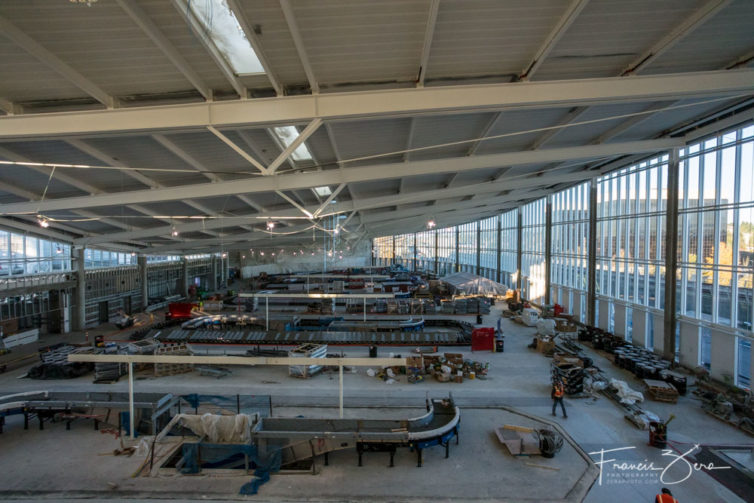
The under-construction great hall where international passengers will retrieve their bags before heading to customs and immigration
’œThe grand hall is sized for 2,600 passengers per peak hour, and we know that the peak is mid-day,’ says Janet Sheerer, IAF project manager, landside, at the Port of Seattle. ’œThere were very few overall design parameters for this project, and that was the biggest one.’
BONUS: Snow operations at Seattle-Tacoma International Airport
Skidmore, Owings & Merrill LLP (SOM), the architect of the renovation project, and Clark Construction Group, the contractor, ran models to make sure the new facility could handle peak passenger traffic. ’œThey ran robust models based on the type of aircraft, when the flight is arriving…to figure out where things need to be located and how many bag claim devices are needed,’ says Sheerer. ’œThe output from those models is what drove the design.
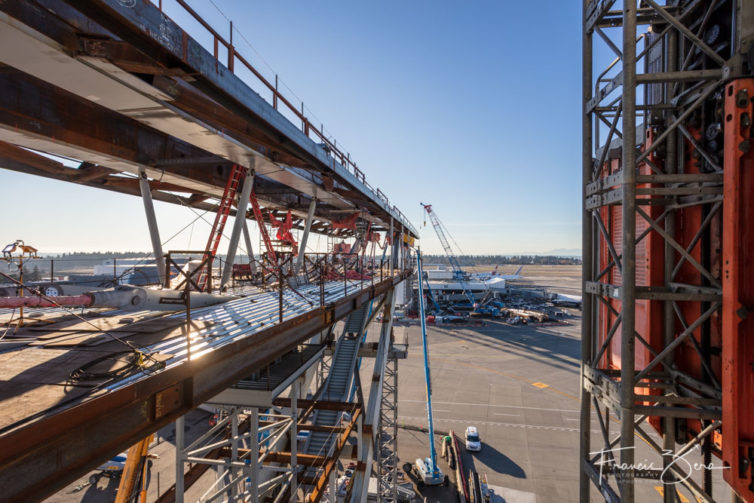
The pedestrian walkway will span this taxiway, and is tall enough for a 747 to pass beneath
Current capacity at the international arrivals terminal is less than half the 2,600/hr-level the new facility promises. The arrivals facility is adding eight international gates, bringing the total to 20. It is also increasing the number of bag claim carousels from four to seven and greatly expanding the area for the baggage claim from the current 668 linear feet to 1,806 linear feet. That’s almost three times the current space.
BONUS: Behind the scenes of SEAT’s People Move System (aka tram)
The new security corridor along the face of Concourse A will provide eight international wide-body aircraft gates with direct access to the new arrivals facility.
- The heavy-lift transport system that hauled the pre-assembled bridge down SEA’s center runway on the night of Jan. 23 for installation at the main terminal
- Two of the four giant strand jacks that will lift the bridge into place
- The pre-assembled bridge span at NE cargo, waiting transport to the other end of the airport for installation
These improvements come just in time for Sea-Tac. The airport is one of the fastest-growing hubs in North America, with passenger traffic jumping more than 40% in the last five years, making it the eighth-busiest airport in the United States. It also has seen a rise of 107% in international passenger traffic from 2007 to 2017, and several new international routes have been added since then. Now Sea-Tac will be able to better exploit its unique position as the closest U.S. west coast hub to both Europe and Asia, being located halfway between London and Tokyo. Sea-Tac has added 16 new intercontinental routes in the last 10 years and will likely add more in the next few years. ’œThe airlines say, as soon as you get done, we’re coming in with more flights,’ says Sheerer.
%CODE1%
One of the more ambitious pieces of the new facility is the 85-foot-high aerial walkway, which will weigh 1,565 tons (about the same as 18 Boeing 747s), span 90 feet across, and extend across an active taxiway. It will be suspended by large cables and have the longest clear span of its type. International passengers will use the walkway to get from the south satellite to the new arrivals facility, traveling across the top of Concourse A. ’œYou’ll be on the moving walkway, cruising down, and to the right and left of you are going to be these big cables,’ says Stephen St. Louis, IAF project manager, airside, at the Port of Seattle. ’œIt’s really going to be impressive.’
The walkway is being built via the ABC (accelerated bridge construction) method, where it is assembled offsite and then hauled in to be placed on the taxiway. ’œWe have a seven-day closure. Our taxi lane will be closed for 168 hours,’ says St. Louis. ’œGatwick completed a similar kind of construction, and their impact was seven days. That’s what we use for our basis.
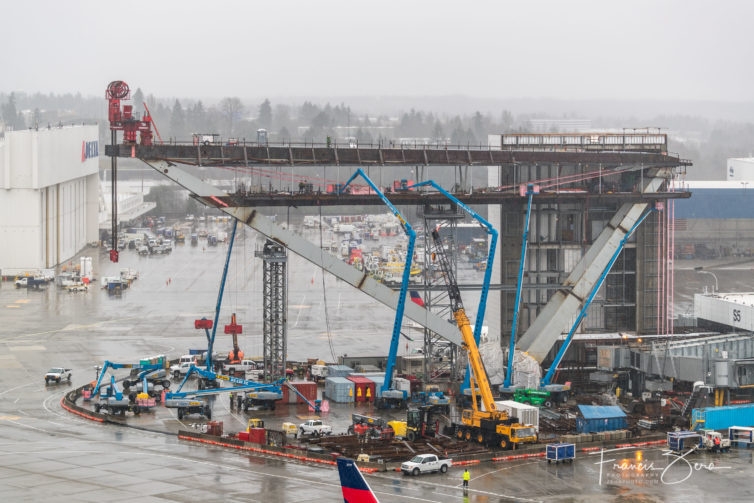
The west bridge abutment the day before the bridge is to be installed
’œWe have communicated with the airlines,’ he added, ’œand they have anticipated that they will have to adjust their schedules. There may be some delays while we have this closure in place.’
During the seven-day downtime, the airport will tug planes out to an engine start-box area, where pilots can fire up their planes. This is a precaution taken to make sure construction workers aren’t impacted by jet blast.
Part of the arrival facilities are being built in consultation with U.S. Customs & Border Protection. ’œThey gave us a 500-page book,’ says Sheerer. ’œIt tells you everything from the size of the room to what kind of security measures are needed in the room to how many cubicles you have to have and specifically how many processing stations you need. It’s really prescriptive, which, in a way is handy because you know what you need to build.’
BONUS: Bird management at Seattle-Tacoma International Airport
The customs area will include enhanced technology to speed up passport check times. The minimum passenger connection time is expected to drop from 90 to 75 minutes as well.
The facility renovation is on track to be completed by the end of May. Activation testing will then take place during the summer months before the facility is opened to the public this fall. The Port says it has designed the facility with environmental concerns in mind and hopes to have the facility receive LEED V4 (Leadership in Energy and Environmental Design, Version 4) Silver certification from the U.S. Green Building Council.
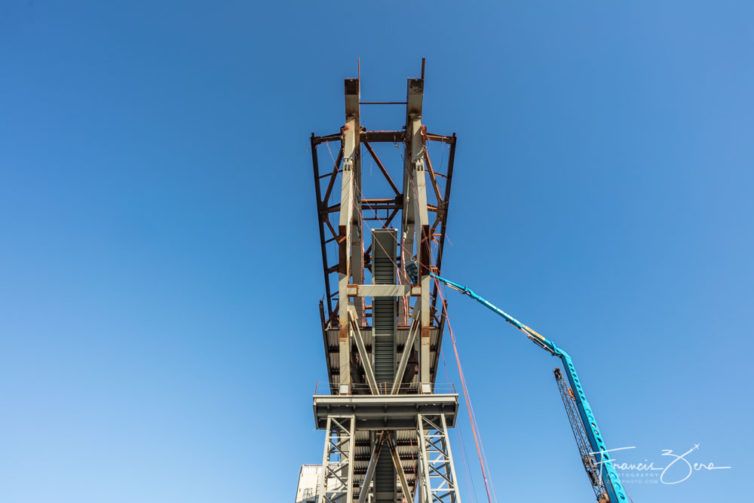
The bridge span will be 780 feet, and tall enough for a 747 to pass beneath
The $968 million project is expected to bring in 10,600 new jobs, including the construction jobs required to build the new facility, Port officials say. As with most airport projects, no taxpayer dollars will be used for funding. Instead, the money will come from a combination of airport-generated revenue, passenger facility charges, and revenue bonds, according to the Port of Seattle website. One consultant study that the Port solicited estimates that each new international route generates an average of $89 million in annual economic impact in the Seattle-Tacoma region.
BONUS: Alaska Airlines kicks it up several notches with new flagship lounge at SEA
With this new increased capacity and state-of-the-art customs technology, Sea-Tac is poised to be a bigger player in international travel. ’œWe’re building this to be as competitive as we can be,’ Sheerer said.
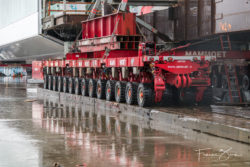
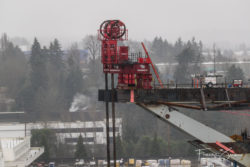
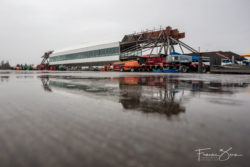
At ~400 acres SEA is one of the smallest hubs by land area in the country. With ~ 22.5M commercial enplanements/yr today SEA is close to capacity with limits on gate access and ramp queuing. Commercial demand is forecast to rise to ~50M enplanements by 2050. This is going to force the further development of a second airport, whether that’s Paine Fields (PAE), which just opened for limited commercial service in 2019 ( https://www.flypainefield.com/), or one of the other regional airports in Western WA (https://www.psrc.org/sites/default/files/psrc-2019may10-rabsflyer.pdf).